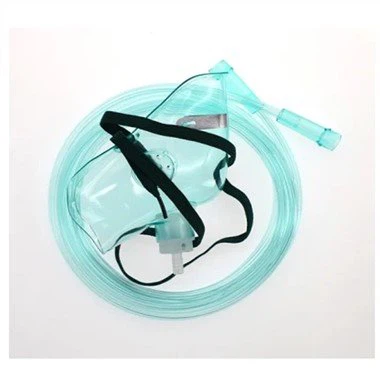What Are The 4 Most Common Syringe Sizes?
Jan 07, 2024
What are the 4 most common syringe sizes?
Introduction:
Syringes are commonly used medical instruments that play a crucial role in administering medication, withdrawing fluids, and performing various medical procedures. Syringes come in different sizes to accommodate varying needs and facilitate the accurate delivery of substances. This article aims to explore the four most common syringe sizes, their uses, and provide a comprehensive understanding of their applications in medical settings.
1. 1 mL Syringe:
The 1 mL syringe, also known as the tuberculin syringe, is the smallest and most precise syringe size commonly used in medical practice. It typically consists of a plunger, a barrel, and a narrow calibrated nozzle. The markings on the barrel allow for precise measurement of small quantities, often in increments of 0.01 mL or less.
Uses:
- Insulin Administration: Due to its high accuracy, the 1 mL syringe is primarily used for insulin administration in diabetic patients. It allows for precise measurement and control of insulin dosages.
- Allergy Testing: The 1 mL syringe is used to administer small amounts of allergens during skin prick tests, helping healthcare professionals identify specific allergens that trigger allergic reactions.
- Tuberculin Testing: This syringe is also employed in tuberculin skin tests to evaluate a person''s immune response to the bacteria that cause tuberculosis.
2. 3 mL Syringe:
The 3 mL syringe is another commonly used size and offers a larger capacity compared to the 1 mL syringe. It consists of a barrel, plunger, and nozzle, similar to the 1 mL variant but with a bigger overall size.
Uses:
- Intramuscular and Subcutaneous Injections: The 3 mL syringe is frequently employed for administering medications and vaccines into muscle tissue (intramuscular injections) or just below the skin (subcutaneous injections).
- Blood Collection: Drawing blood for diagnostic tests or blood donation is often done using a 3 mL syringe. The large capacity of this syringe makes it suitable for collecting an adequate volume of blood for various laboratory analyses.
3. 5 mL Syringe:
The 5 mL syringe offers a further increase in capacity, making it applicable for various medical procedures that require a larger quantity of medication or fluid. Its design closely resembles the 3 mL syringe, with a barrel, plunger, and nozzle.
Uses:
- Intravenous Medication Administration: The 5 mL syringe is commonly used to deliver medications directly into the bloodstream through intravenous routes. It allows healthcare professionals to precisely measure and administer larger medication volumes with ease.
- Feeding Tube Flushing: When feeding tubes are used for enteral nutrition, the 5 mL syringe is effective for flushing the tubes and delivering liquid medications or feeds.
4. 10 mL Syringe:
The 10 mL syringe represents the largest commonly used size among the four discussed here. With a greater capacity, it is suitable for procedures requiring larger volumes of medication or fluid administration.
Uses:
- Irrigation: The 10 mL syringe is often used for wound irrigation, where a significant amount of fluid is required to clean and remove debris from the wound site.
- Oral Medication Administration: For patients who have difficulty swallowing, the 10 mL syringe can be used to administer liquid oral medications.
- Epidural Administration: Epidural anesthesia, commonly used during labor or surgical procedures, may involve the use of a 10 mL syringe to inject anesthesia into the epidural space.
Conclusion:
Syringes play an indispensable role in medical practice, and understanding the different sizes and their applications is vital for healthcare professionals. The 1 mL syringe caters to precise and small medication dosages, while the 3 mL syringe is suitable for injections and blood collection. The 5 mL and 10 mL syringes offer larger capacities for intravenous medication administration, irrigation, and other procedures requiring larger volumes. By familiarizing themselves with the four most common syringe sizes and their purposes, healthcare providers can ensure accurate medication delivery and patient care.







